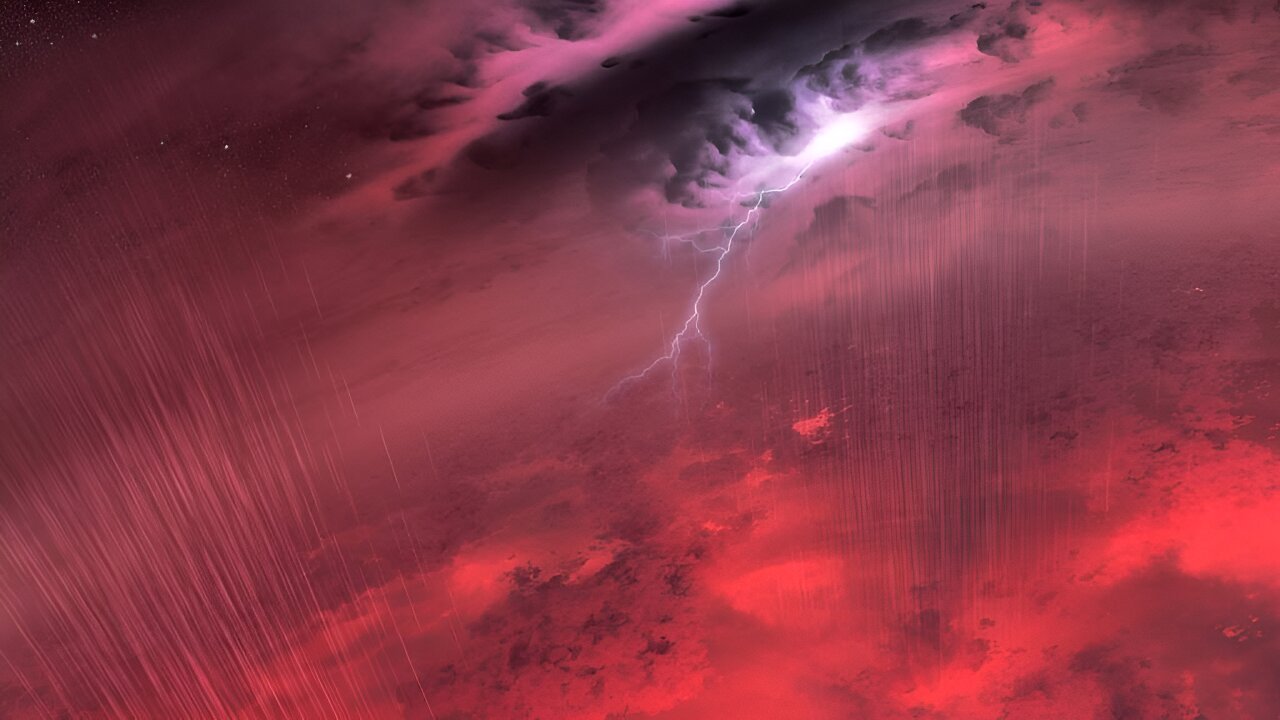Scientists are investigating how lightning on exoplanets can affect the possibility of detecting signs of life on them. Scientists have concluded that they can greatly interfere with the operation of even such a powerful instrument as the James Webb Space Telescope.

Search for traces of life
Detecting biomarkers, that is, substances indicating the presence of life on other planets, is quite a difficult task. They are not easy to see, and the radiation spectra in which they are searched for carry a large amount of noise. A new study shows that it can be even more difficult.
It says that lightning can mask the presence of substances such as ozone, which indicate that complex life may exist on the planet. It can also enhance signs of the presence of compounds such as methane, which is considered a promising biomarker.
Now the discovery of exoplanets has become almost a routine matter. We have found more than 5,500 exoplanets, and the next step is to study their atmospheres and look for signs of life. The James Webb Space Telescope is playing a leading role in this case. But in the atmospheres of some exoplanets, lightning can complicate the work of JWST, obscuring some potential biomarkers and amplifying others.
Although we have discovered more than 5,500 exoplanets, only 69 of them are in potentially habitable zones around their stars. These are rocky planets that receive enough energy to support liquid water on their surface. Our search for biomarkers is focused on this small number of planets.
Lightning on exoplanets
In their study, the authors combined laboratory experiments with simulations of photochemical and radiation transfer. Atmospheres can be extremely complex, and it is unlikely that two exoplanets will have the same atmospheric properties. But physics and chemistry tell us what can happen, and photochemical and radiation transfer models can handle thousands of different types of chemical reactions in the atmosphere.
The researchers found that the effect of lightning on biosignatures depends on the type of atmosphere and the amount of lightning. They considered two broad types of atmospheres: reducing and oxidizing. The first of them does not contain oxygen or other gases based on it and cannot produce any oxidized compounds. The second is its opposite and consists almost entirely of such compounds.
Positive and false positive biomarkers
The research results show that for a planet with surface water and a habitable atmosphere with a weakly reducing or weakly oxidizing environment, lightning can give false positive results with a small probability.
The authors predict that for the type of atmosphere studied here, lightning is not capable of creating false signs of ammonia or methane. They say it is also unlikely that lightning could have created a false positive biomarker for nitric oxide.
However, atmospheric electricity would create some compounds, in particular CO and NO. The researchers used the rate of formation of both chemicals to calculate how the frequency of lightning flares affects the composition of the atmosphere. They then applied this model to Earth-sized planets in the habitable zones of the Sun and the TRAPPIST-1 star for both oxygen and oxygen-free atmospheres.
Scientists have conducted simulations of these scenarios on planets with and without a biosphere. They also calculated simulated spectra from these worlds and determined how easy it would be to identify biomarkers in them.
“We found that lightning is not capable of creating a false positive sign of carbon monoxide on a habitable planet,” the authors explain. However, in an oxygen-rich atmosphere, the speed of lightning, which is only a few times higher than modern Earth’s, can mask signs of the presence of ozone. In other situations, lightning can prevent false positive results. “In summary, our work provides new constraints for the full characterization of atmospheric and surface processes on exoplanets,” the authors conclude.
According to phys.org
Follow us on Twitter to get the most interesting space news in time
https://twitter.comne/ust_magazine


